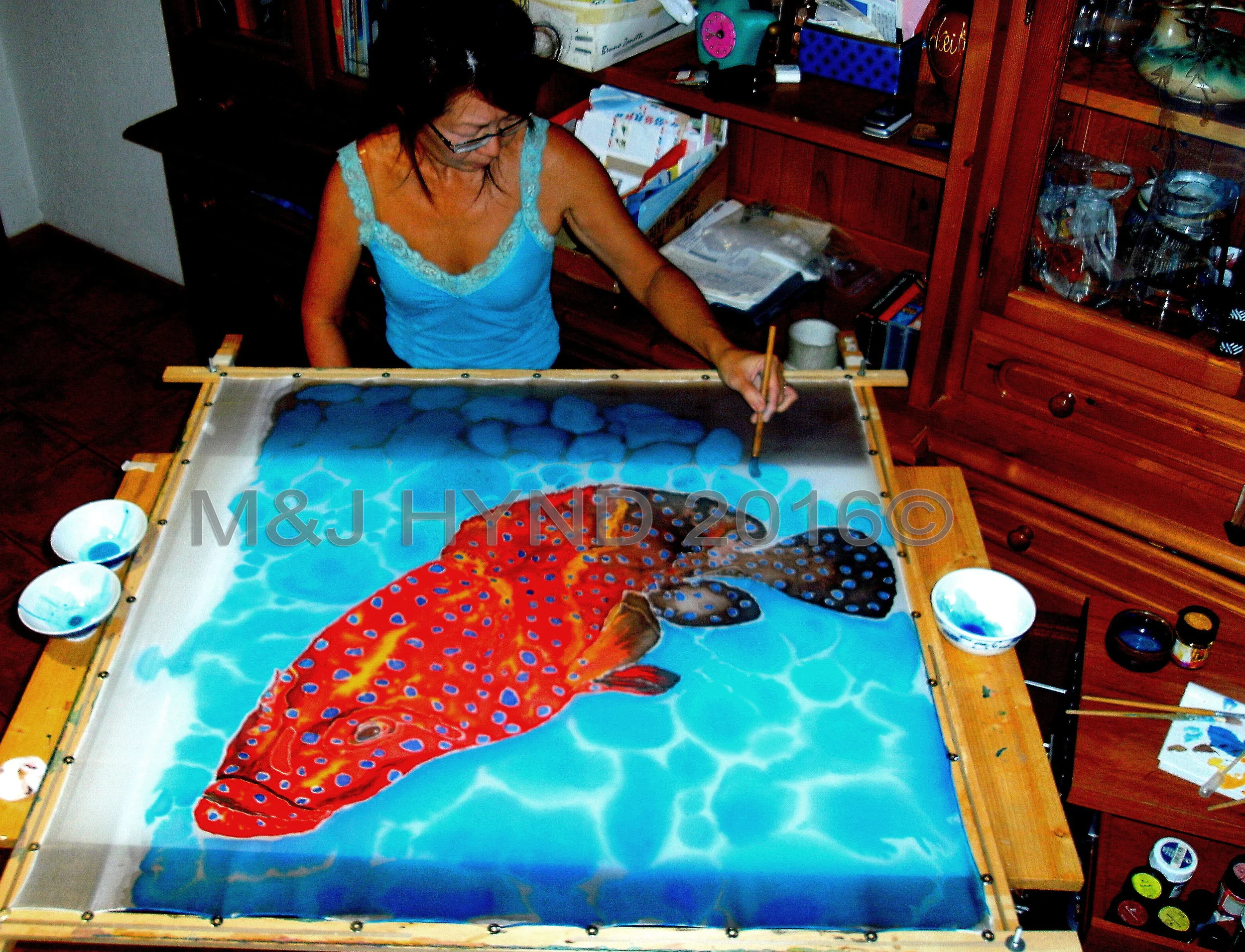Painting Vibrant Colours on Silk
Staying positive will aid stroke rehabilitation more than a negative approach. How do you do that? I liked colour and had always admired silk paintings. I hadn't tried silk painting when I was younger, before the stroke.
But it had always fascinated me with the intricacies of the execution to create marvelous silk painting. As with most consumers, I thought that painting on silk would be best left to somebody else, so I just enjoyed the finished product. Silk shirts, blouses, trousers were in fashion. Silk scarves I had were plentiful. You could change the look of anything by just zhooshing it with silk neckerchiefs, bandanas and accessories.
On one holiday to Mexico, we brought back silk hammocks. With the multitude of products that are made from silk, the idea to paint on silk wasn't as far-fetched as you might have thought.
Art wasn't taught to me at school, as I was a Science stream student. I did Music as a school subject since I was learning piano at home. My parents wanted me to have had a second string to my bow, which is commendable. In case one snapped, (i.e. be a music teacher instead, of being in IT); I would have the choice of both. Unfortunately both snapped; more to the point...exploded.
After the stroke, my husband Murray tried all sorts of activities to try and get my mind and interest engaged again. As it happened, I had been doodling figures of girls and fashion clothes, since I was very young. So, he tried me on charcoal drawing. I liked to 'shade' bits of the drawing. 'Shading' meant I was having to hold my body stationary and do a wiping motion, to's and fro, with my left hand which was a little different as I was originally a right hander - it just felt odd.
As I was in the wheelchair, with a hand-rest, it got pretty cumbersome balancing a sketchpad, and trying to keep my right arm on the hand-rest, trying to draw with my left hand. The left hand side was having to hold my right side upright. After 10 minutes, or so, my whole body was in pain, and I was really fatigued with that unusual activity. No, I was convinced that drawing with charcoal wasn't the way to go forward, even though I couldn't speak properly as yet. Murray tried me on crayons next. My palette of colours was increasing – great. But, there was my usual challenge of 'shading'. It got too much for me, very soon, again.
We were in a bookstore several years later. I found one on silk-painting, and was mesmerised. I couldn't read very well at that time but I looked at the images of completed silks, and marvelled: the hues were just incredible melding into a kaleidoscope of colour. And I could do something similar, I was sure - paint on silk with one hand after my stroke. Really, painting on silk with just one hand? After the stroke, why not - stranger things have happened.
I had found an activity that needed more skill in reading, understanding, memory, researching, questioning, … I had found a passion to do something. I was interested in it to want to learn more. Which is what Murray had been aiming for.
With my island background (born in Penang Island, Malaysia) I'd always been keen on beaches, swaying palm-treed beachscapes of the Caribbean and island-hopping through the Maldivian atolls with their spectacular lagoons held true sparkle for me.
Of the many silk-painters that I've come to admire when I was learning on paint on silk as part of my (self) rehab, Daniel Jean-Baptist was one of the silk artists that inspired me to be more.
To continue, or to leave it for another day, if the unnatural angle when I'm silk painting gets too much for me, was great. Over that period and many, more months and years later on, I grew more confident, both in the silk-painting and in general rehab.
One of the first silk-paintings I'd done coming back to Auckland, is of pukekos which always reminds me of NZ. The view is from the headland on Waiheke island. In a quiet glade, fern fronds unfurling, nikau palms and cabbage trees leading down to the harbour with white sands and sailboats aplenty. Pukeko wears hobnailed boots, representing the people of NZ, innovative, hard-working, welcoming fresh, new ideas. For example, the electricity TV advertisements using pukekos, where pukekos are taught to do all sorts of neat but mundane things - is remarkable.




